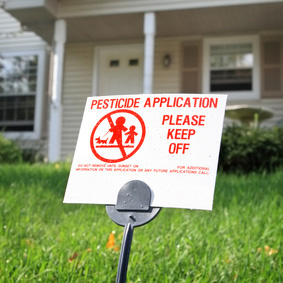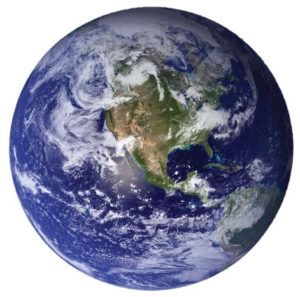For Rachel Carson’s Birthday May 27, 2019
A REMEMBRANCE
From Pesticide Applications in a Maryland County (in 1959 and 2019)
To the Planet-Wide Dual Crises Facing Us Today —
Rachel Carson’s Words Have Resonance
 This year the 112th anniversary of Rachel Carson’s birth (May 27, 1907) coincided with Memorial Day when we remember those who died fighting for our nation. Rachel Carson waged a valiant campaign on behalf of America’s citizens — as well as our non-human residents: not only pets, and domestic animals, but also wildlife (including pollinators, animals without backbones, plants, and even microbes) all that take part in the natural infrastructure that sustains this living planet (our web of life). Facts were her weapons, and her well chosen words were the way she delivered them.
This year the 112th anniversary of Rachel Carson’s birth (May 27, 1907) coincided with Memorial Day when we remember those who died fighting for our nation. Rachel Carson waged a valiant campaign on behalf of America’s citizens — as well as our non-human residents: not only pets, and domestic animals, but also wildlife (including pollinators, animals without backbones, plants, and even microbes) all that take part in the natural infrastructure that sustains this living planet (our web of life). Facts were her weapons, and her well chosen words were the way she delivered them.
Carson wrote Silent Spring because she, herself, could not keep silent about the threats from the chemical pesticides of her day and the need for societies to work with, not against nature. Although a private person in most respects, she was a scientist and writer who “behind the typewriter…could impart enough passion to move a government, rouse a national debate, and place a billion-dollar industry on the defensive…. As Senator Abraham Ribicoff stated in his tribute to Rachel Carson, “All mankind is in her debt.” (Rachel Carson Obituary, 4-16-1964, The Washington Post).
Pesticides and Cancer in Rachel Carson Country Then and Now.
Historically, 2019 marks the 60th anniversary (June 11, 1959) of Rachel Carson’s talk about her research on pesticides (that would be published as Silent Spring in 1962) to the Quaint Acres Citizens Association of Montgomery County, Maryland, at the request of the association president. The Quaint Acres community is where Carson lived from 1957 until 1964.1 At an outdoor site on a warm and humid evening, Carson discarded much of the text she had prepared for the presentation to her neighbors and focused on cancer and insecticides, giving specific “examples…of individuals whose illnesses appeared to be directly related to pesticide exposure.” She was aware that at the time there was “no community-wide problem of insect infestation” in Quaint Acres. (Carson’s notes for the June 11, 1959 talk.) She also knew that at some time following her talk, the listeners would vote on the plan for an insecticide application to her community. “After [Carson’s] remarks, the association voted decisively against the proposed spraying…” (Lear, L., Witness for Nature, 1997).
 This year, 2019, in the very same county a contested Healthy Lawns Act (actively supported by RCLA) was upheld by the state Court of Special Appeals. The Act prohibits use of hazardous pesticides, including those containing substances linked to cancer,2 on residential lawns for cosmetic purposes, in Montgomery County, Maryland. The challenge to the Healthy Lawns Act had been mounted by lawn care companies, a trade association and others. Affirming that the Healthy Lawns Act does not clash with state laws, presiding Judge Robert A. Zarnoch wrote in his opinion: “We conclude that the citizens of Montgomery County [Maryland] are not powerless to restrict the use of certain toxins that have long been recognized as ‘economic poisons’ and which pose risks to the public health and environment” (Barrios, J., “Appeals court finds Montgomery County pesticide ban doesn’t clash with state law,” The Washington Post, 5-3-19).
This year, 2019, in the very same county a contested Healthy Lawns Act (actively supported by RCLA) was upheld by the state Court of Special Appeals. The Act prohibits use of hazardous pesticides, including those containing substances linked to cancer,2 on residential lawns for cosmetic purposes, in Montgomery County, Maryland. The challenge to the Healthy Lawns Act had been mounted by lawn care companies, a trade association and others. Affirming that the Healthy Lawns Act does not clash with state laws, presiding Judge Robert A. Zarnoch wrote in his opinion: “We conclude that the citizens of Montgomery County [Maryland] are not powerless to restrict the use of certain toxins that have long been recognized as ‘economic poisons’ and which pose risks to the public health and environment” (Barrios, J., “Appeals court finds Montgomery County pesticide ban doesn’t clash with state law,” The Washington Post, 5-3-19).
Subsequently, the Montgomery County Department of Environmental Protection advised all property owners and lawn care businesses as well as retailers of pesticides for use on lawns “to immediately transition to organic lawn care.”
We hope that this is just the beginning of a wave of protection that can spread from Rachel Carson’s Montgomery County (Takoma Park, Maryland and Ogunquit, Maine have similar laws) to jurisdictions across the nation, bringing about similar protective measures to residents.
As Rachel Carson wrote in Silent Spring: “If the Bill of Rights contains no guarantee that a citizen shall be secure against lethal poisons distributed either by private individuals or public officials, it is surely only because our forefathers, despite their considerable wisdom and foresight, could conceive of no such problem.”
A Wise Woman’s Warning More Relevant Than Ever
Today’s environmental problems are notably greater than those of Rachel Carson’s time. Many of the national leaders who confront these emergencies appear to not grasp how threatening they are.
Rachel Carson’s warning in the concluding chapter of Silent Spring is especially apt and bears repeating in 2019:
She wrote: “The road we have long been traveling is deceptively easy, a smooth superhighway on which we progress with great speed, but at its end lies disaster. The other fork in the road — the one ‘less traveled by’ — offers our last, our only chance to reach a destination that assures the preservation of our earth.” (“The Other Road” Chapter 17, Silent Spring)
 A planet-wide change of course is even more urgent today than it was 57 years ago when Silent Spring was published.
A planet-wide change of course is even more urgent today than it was 57 years ago when Silent Spring was published.
We face the dual environmental crises of the climate change emergency (related to emissions of greenhouse gases) as well as the predicted extinction of 1 million species leading to a shocking loss of biodiversity.3
Major steps to address the dual crises include:
For the climate emergency: there needs to be decarbonization of energy, transportation, and farming by converting to the use of regenerative sources while at the same time, not contributing to further loss of biodiversity.4
For avoiding loss of species: there needs to be greater support for nature-based scientific research resulting in protective legislation with mandated enforcement that is focused on creating and maintaining biodiversity within: agriculture, fisheries, tourism, forestry, infrastructure, health, manufacturing and consumer education.
Ordinary citizens looking for policies that reflect our present-day condition can turn to the UN Convention on Biological Diversity:
Responding to the predicted loss of birds, insects, other animals and plants, the UN Convention on Biological Diversity; in 2018 adopted the goal of “Living in Harmony With Nature” by 2050. While this program is in accord with Rachel Carson’s vision, and is a long overdue acknowledgement of our connection to the natural world, its target date may have been set too far into the future to save many of today’s threatened vulnerable species. The time to take action is now, and we are the ones who must bring about the needed changes!
In tribute to Rachel Carson let’s make living in harmony with nature the goal for our world — today.
Diana Post & Munro Meyersburg
July 2019
__________
Footnotes
1 Carson’s home in Quaint Acres where she wrote Silent Spring has been designated a National Historic Landmark site.
2 Chemical pesticides continue to be associated with cancer as indicated by just one example the herbicide, glyphosate, active ingredient in the product Roundup. In a recent report, “More than 13,400 plaintiffs allege that Roundup, containing glyphosate, causes non-Hodgkin’s lymphoma [cancer] and that the manufacturer [originally Monsanto] failed to warn about that risk.” Further, 900 lawsuits alleging that Roundup caused cancer have been ordered by a judge to proceed with mediation settlement talks. (Reuters,”Mediator Picked in Roundup Case,” The N.Y. Times, 5-23-19)
3 The loss of biodiversity (of resident wild plants and animals) is linked to anthropogenic (man-made) effects such as: loss of natural habitat (in forests, grasslands, wetlands, and coastal areas), overfishing, industrial farming, wildlife poaching, as well as contamination of natural areas (by chemical pesticides, plastics, synthetic fertilizers, and other man-made substances). These impacts deplete natural ecosystems of essential wild inhabitants. These adverse effects contributing to the loss of essential wild inhabitants from natural areas result in the decline of essential ecosystem services. What are ecosystem services? An ecosystem is a discrete unit consisting of living and non-living parts interacting to form a stable system. Ecosystem services are the benefits to humans that are generated by an ecosystem for example: an ecosystem can be a wetland such as a: bog, pond, marsh, swamp, or vernal pool. An ecosystem service by a wetland can include helping to buffer the impacts of floods and droughts, providing vital habitat for wildlife, and filtering pollution from our waters (W.R. Irvin, “Protecting the world’s species,” Letter to Editor, The Wash. Post, 5-11-19)
4 Those choosing to replace fossil fuels as the source of electric power need to make certain that doing so does not lead to a harmful environmental aftermath. This seemed certain when a recent proposal by Georgetown University in Washington, DC to reduce its carbon footprint involved creating a solar energy facility in a rural area of Charles County, Maryland. The reported razing of 200 acres of trees on a privately owned forested property would be required to accommodate the solar facility. This would involve loss of natural habitat and an associated decline of ecosystem services. Why? The trees to be removed exist in an established forest that has provided a natural home for birds, insects, bacteria, and plants — contributing to biodiversity. This forest also has helped with cooling in summer, created healthy soil, sequestered CO2, and contributed to groundwater purification as valuable ecosystem services for citizens of Maryland and beyond.
Solar collectors can function equally effectively in various sites such as urban rooftops. The 200 acre established forest in Charles County could not be moved intact to another site. The proposed sweeping tree removal would result in loss of ecosystem services especially vital in view of the current climate change crisis.
We recommend that the announced plan by G.U. to build a solar facility in Charles County be revised with an alternative location for the solar collectors. Further, if owners of the land on which the forest is located plan to sell it, possibly to developers, then the 200 acre area needs to be purchased by a private foundation or by the state and placed under an easement to preserve and protect it for present and future generations.
Citizens, localities and institutions need to become aware of the loss attending the destruction of such a special natural area. Charles County residents have objected to the proposed razing of trees in the forest required for erecting the G.U. solar facility. It is in the interest of Marylanders and concerned citizens everywhere to keep this from taking place.


